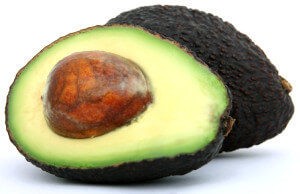Fats – What the skinny on them?

We’ve all heard the recommendation to decrease our intake of saturated fats and trans fats. We’ve all heard that eating the wrong kinds of fats can cause serious health problems. We’ve also heard there are good fats and bad fats. Here’s the “skinny”…
The Best Fat
Monounsaturated fat is the best type because it both increases the good cholesterol (HDL) and decreases the bad cholesterol (LDL) in your blood. Sources of monounsaturated fat are olive oil, peanut oil, canola oil, most nuts, olives and avocados.
The Second Best Fat
Polyunsaturated fat is also good for you because it decreases the LDL (bad cholesterol). Sources of the polyunsaturated fat include corn, soybeans, sunflower oils, walnuts, and most mayonnaise and salad dressings.
The Bad Fat
Saturated fats are bad fats. They are easily identifiable because most are solid at room temperature. These fats are poor choices as they can actually increase the bad cholesterol in your blood stream, which can cause deposits of fat in the blood, leading to increased risk of heart attacks and even stroke. Sources of saturated fat are butter, cream and whole milk, sour cream, cream cheese, cheese, bacon and high-fat meats.
The American Heart Association recommends that you consume no more than 8 grams of saturated fat per 1000 calories. For example, a breakfast composed of two eggs and two slices of bacon has 5.6 grams of saturated fat (two-thirds of your daily allotment!). If you substitute two egg whites for one of the eggs, replace 1 ounce of Canadian bacon for the regular bacon, you will have reduced the saturated fat to 3 grams while retaining the nutritional value of the meal. Contrary to popular belief, turkey bacon has 1 gram of fat per slice so it is not a significant improvement from regular bacon.
The Worst Fat
Trans fats are the most dangerous kind of fats and should be avoided because they do all the wrong things. These fats lower good cholesterol while also raising bad cholesterol. Trans fats are double trouble for your health. They can lead to heart disease, stroke, diabetes and obesity. Trans fats are essentially unsaturated plant fats that have been chemically modified to become a solid so they perform like a saturated fat. The process, called hydrogenation, makes the fat denser, raises the melting point, and results in the fat having a longer shelf life.
Trans fats have traditionally been used by food manufacturers to provide a desirable texture (ie. crispy crackers) and also to make them stay fresh longer. Sources of trans fat are stick margarine, baked goods, fried foods, and many packaged food mixes.
If a food contains less than 0.5 g per serving, the food manufacturer can legally list the trans fat content as “zero.” To determine if there is actually trans fat in a product, look for words like “hydrogenated” or “partially hydrogenated” in the ingredient list.
New evidence indicates that trans fats stimulate genes to increase inflammation and insulin resistance. The bottom line is for better health and cholesterol management avoid trans fats and limit saturated fats in your diet whenever possible.

